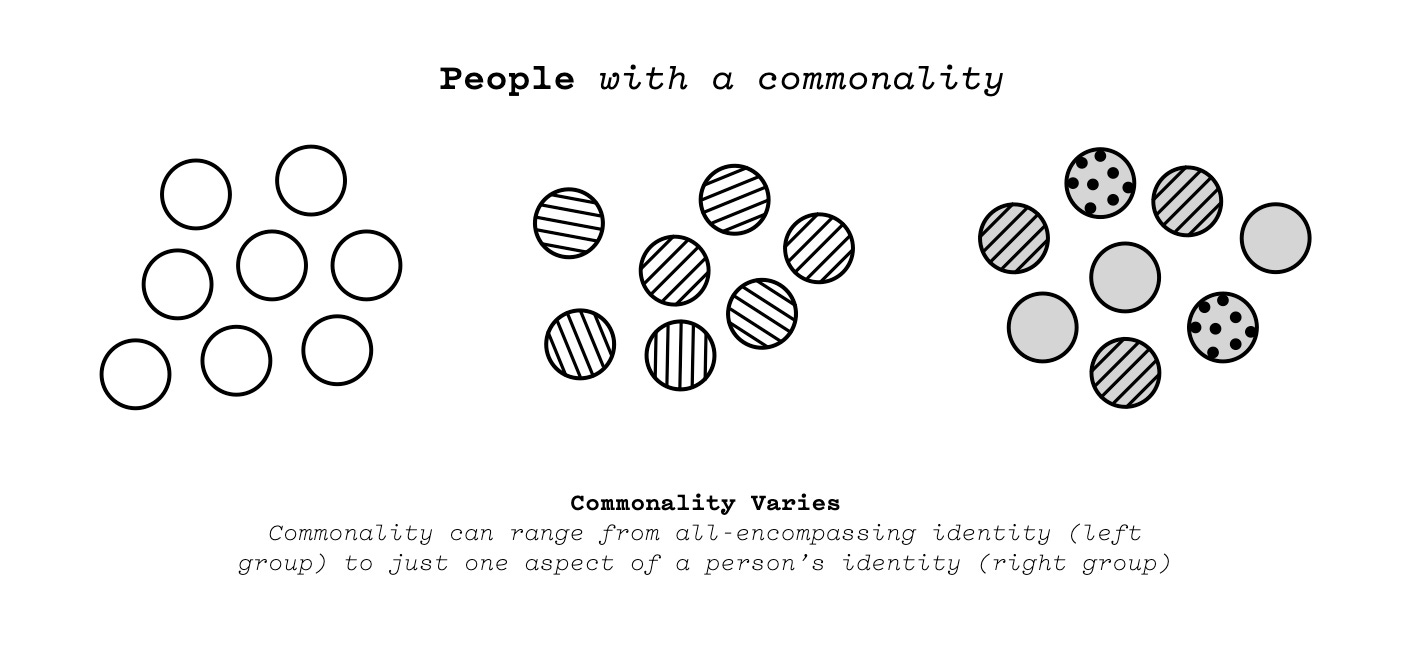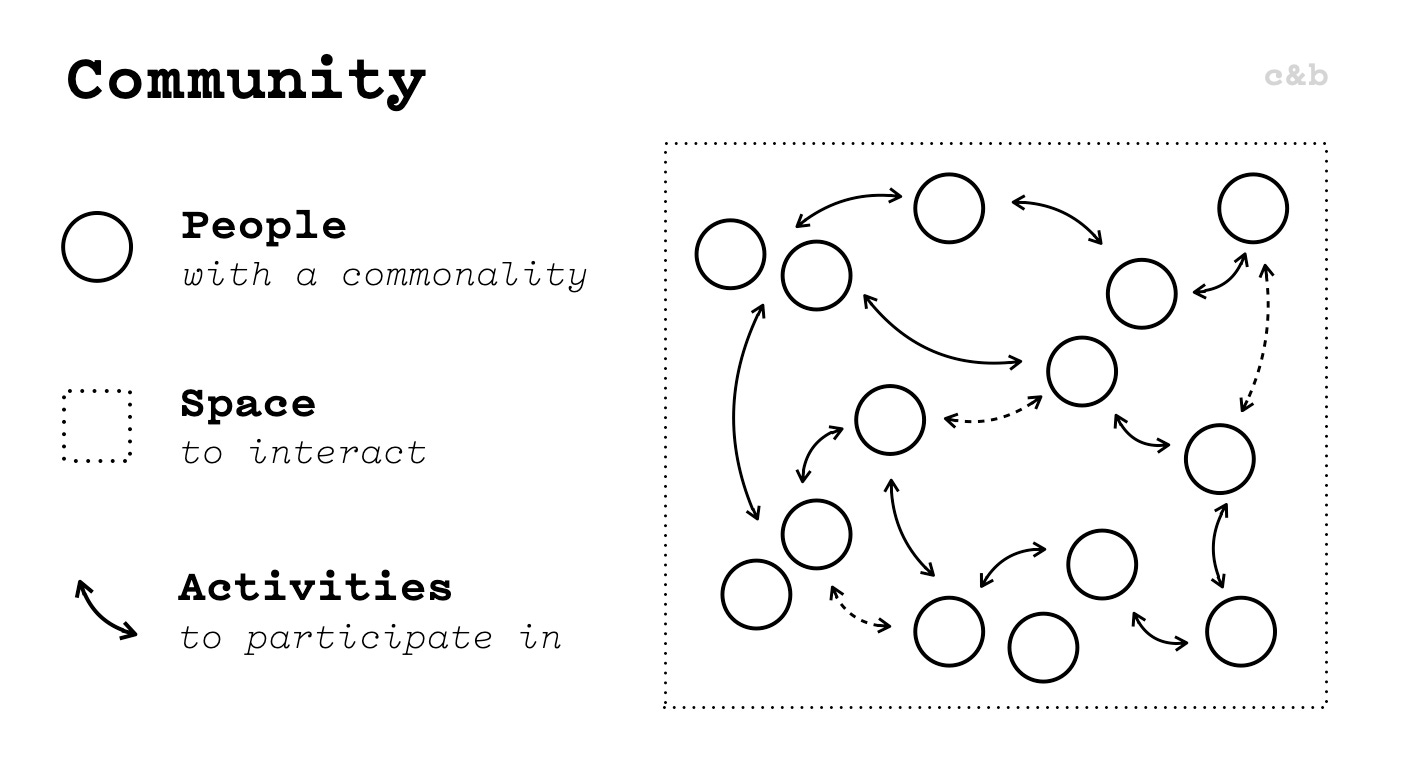Community 101: Definition and Components
Three components make up all communities: people with a commonality, activities they participate in, and spaces where they interact with each other.
“Community” has become a catch-all. Everyone seems to agree it’s important, but few stop to consider what a community really is. Even pithy how-to tweets find themselves self-referential: “To create community, make a community.”



The concept of community is core to successful countries, companies, and livelihoods around the world, hence agreement that it’s important. However, in reality, creating, fostering, and growing communities is difficult.
The first step to identifying and creating what a community is having a clear definition. Communities, regardless of their context, have the same 3 fundamental components. Understanding these components enables us to design communities that deliver real value and achieve the goals of their members.
What is a community?
Definition: A community is a group of people with a commonality who engage with each other in spaces of interaction.
A community is defined by, and must have, 3 key components:
People with a commonality
Activities members participate in
Spaces where activities occur
#1: People with a Commonality -- Who are we?
The defining component of all communities is a group of people with a commonality. Commonality is when two or more people have the same characteristic, belief, circumstance, or goal. Commonalities can exist before people interact with each other, or be generated through participation in group experiences.

Examples of commonality:
Having played soccer on the same team in high school
Occupying the same profession
Having been through the same traumatic experience
Living in the same neighborhood
#2: Activities to Participate In -- What do we do?
An activity is what the members of the community do with one another in order to engage with the community. Activities are defined by motive (why), not medium (how). These activities reinforce a community’s commonality and facilitate exchange (knowledge sharing, transactions) between members. If people with something in common do not participate in activities together, they are not a community.
Activities do not need to include all members at once and can take different forms: one to one, one to many, and/or many to many.

Examples of activities:
Having dinner (networking dinner for CFOs)
Conversing or discussing topics (any subreddit)
Competing in a sport (pick-up soccer after work)
Sharing resources (flea market)
#3: Spaces to Interact -- Where do we do it?
A space is where community activities occur—for example, a physical room or online message board. A community’s spaces are often deeply intertwined with the community’s activities. Spaces that are purpose-built for the activities of a community reduce the barrier to engage and can increase participation, thus strengthening the community.
Spaces fall within two-dimensions: synchronous vs. asynchronous and digital vs. physical. Communities use multiple spaces from both dimensions.

Examples of places of interaction:
Online discussion spaces: Twitter, Facebook Groups, Reddit
Town coffee shop
Message board (digital or physical)
RPG Games
Private clubs
Community can be defined.
A community is a group of people with a commonality who engage with each other in spaces of interaction.

Conclusion
Justice Potter gave us “I know it when I see it” and most people feel that way about community. However, intuition alone is not enough to successfully organize people and make a meaningful impact on the world. Defining what communities are enables us to design them to effectively achieve the collective goals of their members.
What’s next…
This is the first of many posts I’ll be writing to detail communities, their power, how they can be used, and what it means for our lives and businesses. Please share these ideas with your teams and friends. If you have ideas, I’d love to hear them.



